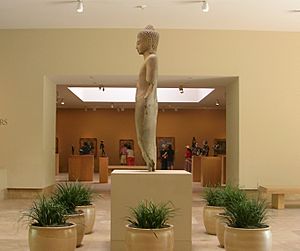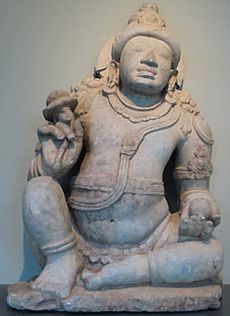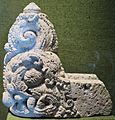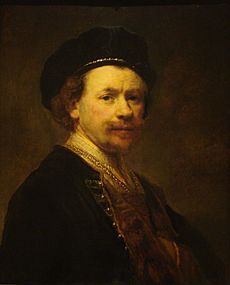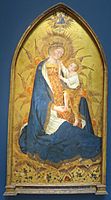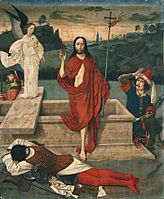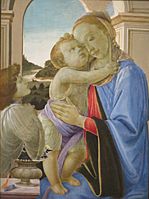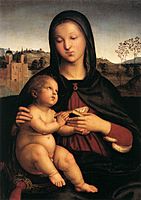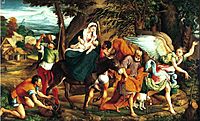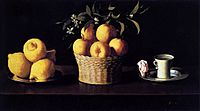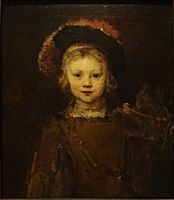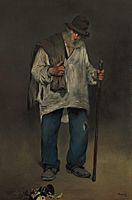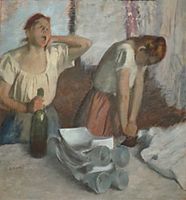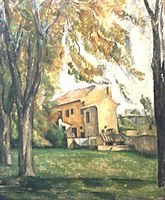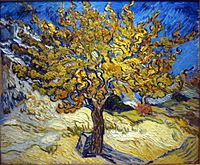Norton Simon Museum facts for kids

The museum in 2020
|
|
| Former name | Pasadena Art Institute, Pasadena Art Museum |
|---|---|
| Established | March 1, 1975 |
| Location | Pasadena, California |
| Type | Art museum |
| Collection size | approximately 12,500 objects / approximately 800 objects on display |
| Architect | Ladd + Kelsey |
| Public transit access | Metro Local Bus 180 / Pasadena Transit Route 10, 33 |
The Norton Simon Museum is an art museum in Pasadena, California. It used to be called the Pasadena Art Institute and later the Pasadena Art Museum. The museum is famous for its large collection of art and the many sculptures in its gardens.
Contents
What's Inside the Museum?
The Norton Simon Museum has a huge collection of art from all over the world. You can see European paintings, sculptures, and tapestries, which are large woven pictures. It also has a big collection of Asian art, including sculptures and paintings.
Outside, beautiful gardens surround the museum. You can see many sculptures, including famous works by the artist Rodin near the entrance. There is also a large pond with more art around it.
The museum has a theater that shows movies every day. It also hosts talks, concerts, and dance shows throughout the year. The museum is on the route of the famous Rose Parade, and you can often see its unique brown tile building on TV during the event.
History of the Museum
The museum's story began in 1953. A collector named Galka Scheyer gave about 400 German Expressionist artworks to what was then the Pasadena Art Institute. The next year, the museum changed its name to the Pasadena Art Museum. It became known as a great place to see modern art.
In 1962, a curator named Walter Hopps organized some of the first shows of Pop art, a style that uses images from everyday life.
A New Building
The museum needed a new, bigger home. In 1969, a modern building was designed by architects Thornton Ladd and John Kelsey. The outside of the building is covered in 115,000 special brown tiles that have a wavy surface.
How Norton Simon Got Involved
By the early 1970s, the museum was having money problems. At the same time, a businessman and art collector named Norton Simon was looking for a place to display his huge art collection of over 4,000 pieces.
In 1974, Simon made a deal with the museum. He agreed to help pay its debts. In return, he could use most of the museum's gallery space for his own collection. The museum was renamed the Norton Simon Museum in his honor.
Later Changes
After Norton Simon passed away in 1993, his wife, the actress Jennifer Jones, helped make more improvements. In 1995, a major renovation was led by the famous architect Frank Gehry. The project created better galleries, more space for Asian art, and beautiful new gardens for the sculpture collection.
The Art Collections
The Norton Simon Museum has a collection of more than 12,000 artworks, but only about 800 to 900 are shown at one time. This allows the museum to rotate what's on display. The art is technically on long-term loan from foundations created by Norton Simon.
Asian Art
The museum has a world-class collection of art from South Asia and Southeast Asia. You can see amazing stone sculptures from India from the ancient Kushana and Gupta periods. There are also beautiful bronze statues from the Chola dynasty of southern India. The collection includes art from many countries, including India, Pakistan, Nepal, Tibet, Cambodia, and Thailand.
-
8 Miraculous Events of the Buddha's Life from Myanmar, 13th century
-
Water spout, central Java, 15th century
European Art: 14th–16th Centuries
This collection features masterpieces from the Renaissance, a period of great creativity in Europe. There are beautiful religious paintings by artists like Botticelli and Raphael. You can also see works by Northern European masters like Lucas Cranach the Elder.
European Art: 17th–18th Centuries
Art from the Baroque period is well represented here. The collection includes powerful works by Peter Paul Rubens and three amazing portraits by Rembrandt. There are also paintings from France and Italy that show scenes of daily life and landscapes from that time.
European Art: 19th Century
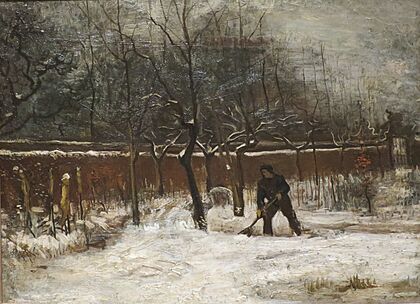
The museum has one of the best collections of Impressionist and Post-Impressionist art in Southern California. You can see famous paintings by Claude Monet, Pierre-Auguste Renoir, and Edgar Degas. The museum has over 100 works by Degas alone. There are also masterpieces by Vincent van Gogh, Paul Cézanne, and Paul Gauguin.
Modern and Contemporary Art
The museum's modern art collection includes important works by Pablo Picasso, Henri Matisse, and Diego Rivera. There is also a special collection of works by the "Blue Four" artists: Paul Klee, Lyonel Feininger, Alexei Jawlensky, and Wassily Kandinsky.
The contemporary art collection features art made after World War II. It includes Pop Art by artists like Andy Warhol and Roy Lichtenstein, as well as works by many important California artists.
Sculpture Garden
The museum and its gardens are home to many sculptures by famous artists. You can see works by Aristide Maillol, Henry Moore, and Barbara Hepworth. The gardens provide a beautiful outdoor setting to enjoy these three-dimensional artworks.
Art Ownership Questions
Sometimes, museums have artworks that may have been taken unfairly from their original owners long ago. This has happened at the Norton Simon Museum.
In 2012, the country of Cambodia asked for a statue back. They said it had been looted from a temple during a time of war. In 2014, the museum returned the sculpture to Cambodia.
The museum was also involved in a long legal case over two paintings, Adam and Eve by Lucas Cranach the Elder. A family claimed the paintings were taken from them by the Nazis during World War II. The museum argued it had gotten the paintings legally. After many years in court, the final ruling in 2017 allowed the museum to keep the paintings.
Gallery
Here are some of the famous artworks you can see at the museum.
-
Giovanni di Paolo, Branchini Madonna, 1427
-
Dieric Bouts, Resurrection, 1455
-
Sandro Botticelli, Madonna and Child with Adoring Angel, 1468
-
Raphael, Madonna and Child with the Book, 1503
-
Jacopo Bassano, Flight Into Egypt, 1545
-
Peter Paul Rubens, The Holy Women at the Sepulchre, 1611
-
Francisco Goya, St. Jerome in Penitence, 1798
-
Édouard Manet, The Ragpicker, 1869
-
Claude Monet, The Artist's Garden at Vétheuil 1881
-
Edgar Degas, Women Ironing, 1884
-
Paul Cézanne, Farmhouse and Chestnut Trees at Jas de Bouffan, 1885–1887
-
Vincent van Gogh, Vieux Paysan: Patience Escalier, 1888
-
Vincent van Gogh, Portrait of the Artist's Mother, 1888
See also
 In Spanish: Museo Norton Simon para niños
In Spanish: Museo Norton Simon para niños


